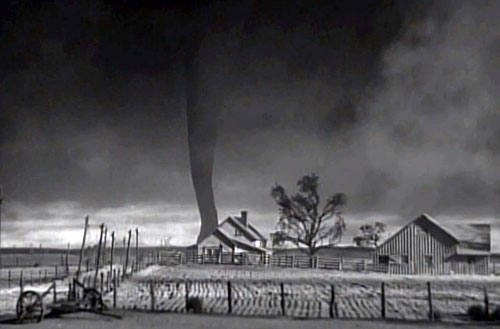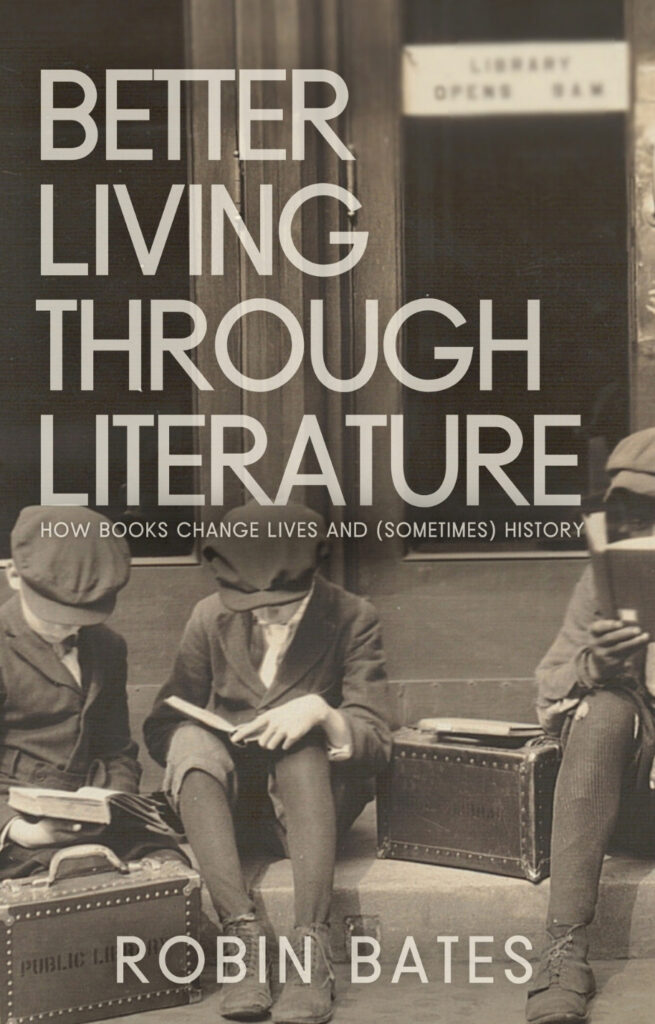Monday
“The Assyrian came down like a wolf on the fold” in parts of the American south this past weekend, leaving death and destruction in its wake. And unfortunately, God didn’t intervene this time, as God does in Lord Byron’s “The Destruction of Sennacherib.” As a result, Mayfield, Kentucky and other communities in the area suffered devastating tornado damage.
Eight years ago I applied L. Frank Baum’s Wizard of Oz to Oklahoma’s horrendous tornadoes, which killed 26 people and injured 212 others. The death toll from the recent tornadoes far surpasses those numbers. Baum drew his own inspiration from the tornadoes that struck the drought-stricken midwest in the 1890s, a condition caused partly by seasonal cycles and partly by poor farming practices. Our own tornadoes are likely caused by climate change as air from an unseasonably warm December hit a cold front.
Sadly, climate change promises more landscapes like the one in which Dorothy grows up:
When Aunt Em came there to live she was a young, pretty wife. The sun and wind had changed her, too. They had taken the sparkle from her eyes and left them a sober gray; they had taken the red from her cheeks and lips, and they were gray also. She was thin and gaunt, and never smiled now. When Dorothy, who was an orphan, first came to her, Aunt Em had been so startled by the child’s laughter that she would scream and press her hand upon her heart whenever Dorothy’s merry voice reached her ears; and she still looked at the little girl with wonder that she could find anything to laugh at.
Uncle Henry never laughed. He worked hard from morning till night and did not know what joy was. He was gray also, from his long beard to his rough boots, and he looked stern and solemn, and rarely spoke.
The tornado strike seems in keeping with the landscape:
From the far north they heard a low wail of the wind, and Uncle Henry and Dorothy could see where the long grass bowed in waves before the coming storm. There now came a sharp whistling in the air from the south, and as they turned their eyes that way they saw ripples in the grass coming from that direction also.
Suddenly Uncle Henry stood up.
“There’s a cyclone coming, Em,” he called to his wife. “I’ll go look after the stock.” Then he ran toward the sheds where the cows and horses were kept.
Aunt Em dropped her work and came to the door. One glance told her of the danger close at hand.
“Quick, Dorothy!” she screamed. “Run for the cellar!”
Toto jumped out of Dorothy’s arms and hid under the bed, and the girl started to get him. Aunt Em, badly frightened, threw open the trap door in the floor and climbed down the ladder into the small, dark hole. Dorothy caught Toto at last and started to follow her aunt. When she was halfway across the room there came a great shriek from the wind, and the house shook so hard that she lost her footing and sat down suddenly upon the floor.
Of course, Dorothy has a far happier ending than that experienced by the citizens of western Kentucky and eastern Tennessee and northern Arkansas. In Oz, according to allegorical readings of the novel, America’s problems get sorted out.
In this reading, which I’ve written about before, the Wicked Witch of the East is the East Coast banks, which were keeping farmers’ mortgages high by insisting on the country retaining the gold standard. As populist presidential candidate Williams Jennings Bryan memorably thundered,
If they dare to come out in the open field and defend the gold standard as a good thing, we shall fight them to the uttermost, having behind us the producing masses of the nation and the world. Having behind us the commercial interests and the laboring interests and all the toiling masses, we shall answer their demands for a gold standard by saying to them, you shall not press down upon the brow of labor this crown of thorns. You shall not crucify mankind upon a cross of gold.
The Wicked Witch of the West, meanwhile, is the drought conditions. In Baum’s American fairy tale, pioneer woman Dorothy joins arms with agriculture (the scarecrow), industrial workers (the tin woodman) and Bryan (the cowardly lion) to restore America to its former glory.
One must be careful about pushing the allegory too far, but Wizard of Oz starts out very grim until Dorothy, demonstrating America’s fighting can-do spirit, triumphs over adversarial conditions and a conman chief executive to restore the country to its former condition—which is to say, a country that can dream of a better future. When Dorothy returns home, the farmhouse has been rebuilt, Em folds Dorothy in her arms, and Dorothy says, “I’m so glad to be at home again.” For the moment, the darkness that opens the book has lifted.
Now it’s not an economic catastrophe that threatens us but a climate catastrophe. Once again we’re seeing extreme weather events, and while some of them are again happening out west (the West Coast drought and wildfires), every part of the country has been hit. In other words, we have a Wicked Witch of the West-East-North-South. And of course, there’s also the rest of the world.
So let’s rethink the Wizard of Oz as a fairy tale about saving the planet, not just America. Let’s say that the Wicked Witch of the East is the fossil fuel companies and their lobbyists in Washington. Imagine that the climate disasters that are devastating us only stiffen our resolve. Although, for a little while, we are tricked by a conman who ascends to power through hot air, ultimately the various sectors of society unite to defeat the climate destroyers.
Yes, Wizard of Oz was written as a fairy tale. As Baum writes in his forward, “It aspires to being a modernized fairy tale, in which the wonderment and joy are retained and the heartaches and nightmares are left out.” But fairy tales, as fantasy author Neil Gaiman tells us, can simultaneously be fantastical and true. As he puts it,
Fairy tales are more than true: not because they tell us that dragons exist, but because they tell us that dragons can be beaten.
So imagine that the dragon of climate change, now that we’ve named it, can be beaten. It’s a dream to aspire to.


